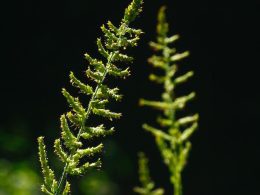Carnivorous plants are a fascinating group of plants that have evolved to capture and digest insects and other small animals. They are found in many parts of the world, from the tropics to the arctic, and come in a variety of shapes and sizes. In this article, we will explore where to find carnivorous plants in the wild and how to observe them safely.
What are Carnivorous Plants?
Carnivorous plants are plants that have adapted to grow in nutrient-poor soils by capturing and digesting insects and other small animals. They have evolved a variety of mechanisms to capture their prey, including sticky traps, snap traps, and pitfall traps. Some of the most well-known carnivorous plants include the Venus flytrap, pitcher plants, and sundews.
Where to Find Carnivorous Plants in the Wild
Carnivorous plants can be found in many parts of the world, but they are most commonly found in wetlands and bogs. They are also found in other habitats, such as rainforests, deserts, and alpine meadows. Some of the best places to find carnivorous plants in the wild include:
1. The Southeastern United States: The Southeastern United States is home to a variety of carnivorous plants, including pitcher plants, sundews, and bladderworts. Some of the best places to find them include the Green Swamp in North Carolina and the Apalachicola National Forest in Florida.
2. Borneo: Borneo is home to a large number of carnivorous plants, including the Nepenthes pitcher plants. These plants can be found in the rainforests of Borneo, particularly in the Malaysian state of Sarawak.
3. Australia: Australia is home to a variety of carnivorous plants, including the sundews and the pitcher plants. Some of the best places to find them include the wetlands of Western Australia and the rainforests of Queensland.
How to Observe Carnivorous Plants Safely
Observing carnivorous plants in the wild can be a rewarding experience, but it is important to do so safely. Here are some tips for observing carnivorous plants safely:
1. Stay on designated trails: When visiting areas where carnivorous plants grow, it is important to stay on designated trails to avoid damaging the plants and their habitats.
2. Do not touch the plants: Carnivorous plants are delicate and can be easily damaged. It is important not to touch the plants or disturb their traps.
3. Do not remove plants from the wild: Removing carnivorous plants from the wild is illegal in many areas and can harm the plants and their habitats.
4. Respect the environment: When observing carnivorous plants in the wild, it is important to respect the environment and leave no trace. This means packing out all trash and not disturbing the natural surroundings.
Conclusion
Carnivorous plants are a fascinating group of plants that can be found in many parts of the world. They have evolved a variety of mechanisms to capture and digest insects and other small animals. When observing carnivorous plants in the wild, it is important to do so safely and responsibly. By following these tips, you can enjoy the beauty and wonder of these amazing plants while also protecting them and their habitats.












